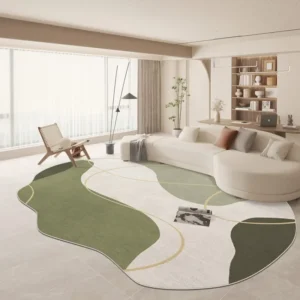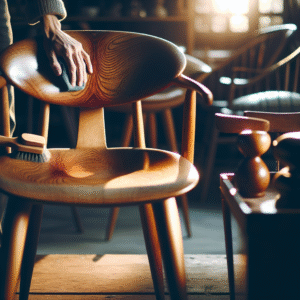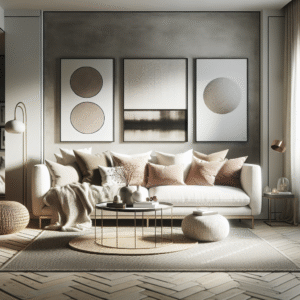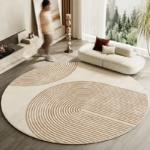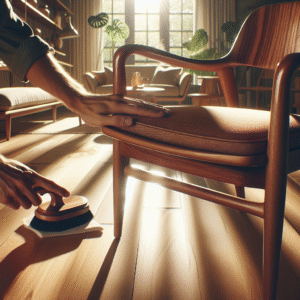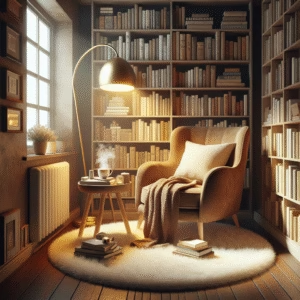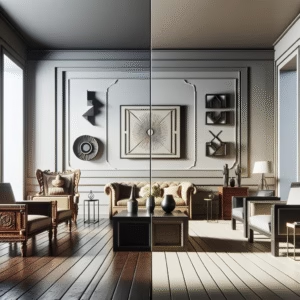Unlocking the Timeless Treasure: Essential Secrets to Preserve the Value of Antique Furniture
Ever inherited a beautiful piece of antique furniture that seems to lose its charm over time? You’re not alone. Many people possess these timeless treasures, but maintaining their value can feel daunting. In this comprehensive guide, we will unveil essential secrets to preserve the value of antique furniture, ensuring that these pieces not only maintain their beauty but also become cherished family heirlooms.
From proper cleaning techniques to expert restoration tips, we will cover everything you need to know. By the end of this article, you will have actionable insights to take care of your antique treasures, along with understanding their historical significance and market value. Let’s dive into the world of antique furniture!
Understanding the Value of Antique Furniture
Antique furniture, typically defined as items over 100 years old, carries significant emotional and financial value. This section explores what gives these pieces value, why they deserve proper care, and how to ensure they remain in great condition.
Historical Significance and Design
The history of a piece can greatly influence its value. Understanding the style periods and the craftsmanship involved can help you appreciate their worth more deeply. If you discover that your antique is a rare find from the Victorian era, for example, you’ll know it’s worth protecting.
Market Value
The market for antique furniture can fluctuate. Regular appraisals can help you understand the current value, allowing you to make informed decisions regarding its care and preservation. Websites like Antiques Trade Gazette can provide insights into current trends and values.
Effective Cleaning Techniques for Antique Furniture
Cleaning antique furniture is an art in itself. Using the right techniques and materials can greatly affect the integrity of your treasured pieces. Here are some must-know tips.
Gentle Dusting
Use a microfiber cloth to dust your antique furniture gently. Avoid harsh chemicals; instead, opt for a mix of water and mild soap when necessary.
Spot Testing for Polishes
Many antiques require specific polishes. Always conduct a spot test in an inconspicuous area before applying any product to the entire piece.
Proper Storage and Display
How you store and display your antique furniture is crucial for its longevity. Here are some strategies for protecting your pieces.
Climate Control
Antiques thrive in environments with consistent temperature and humidity. Aim for a temperature around 70°F (21°C) and humidity between 40-60% to prevent warping and cracking.
Safe Display Practices
Use pads under objects displayed on top of antiques to avoid scratches and use UV-blocking glass in displays to protect the finishes from sunlight.
Restoration vs. Preservation
Deciding between restoring and just preserving your antique furniture can be complex. This section covers the pros and cons of each approach.
Restoration Approaches
Professional restorers can bring back a piece’s original appearance, but this can alter its historical authenticity. Be cautious; if the restoration is overly aggressive, it may decrease value.
Preservation Techniques
Often, preserving the existing finish and structure is more beneficial. Simple repairs can maintain originality while ensuring the furniture remains functional and aesthetically pleasing.
Antique Furniture Insurance
Protecting your investment is key. Consider acquiring insurance specifically for your antique furniture. This ensures peace of mind and financial coverage in case of unforeseen damage.
Documentation and Appraisals
Always keep artwork, documents, or photographs attached to your antique furniture updated. Regular appraisals can help document changes in value over time, making you aware of your insurance requirements.
Common Mistakes to Avoid
Missteps in caring for antique furniture can lead to irreversible damage. Here are common pitfalls to avoid.
Using the Wrong Cleaners
Avoid harsh chemicals. Always opt for natural solutions when possible. They can provide a deep clean without damaging finishes.
Ignoring Signs of Damage
Foster a proactive approach. If you notice issues like cracks, pest infestations, or discoloration, address them immediately with professional help.
FAQs
What is the best way to clean antique wood furniture?
Use a damp microfiber cloth with a mild soap solution. Avoid soaking the wood and dry it immediately.
How often should I have my antique furniture appraised?
It’s advisable to have your antiques appraised every few years or prior to any significant changes to your collection.
Can I repair my antique furniture myself?
Some minor repairs can be DIY, but for significant issues, consult a professional to avoid diminishing the piece’s value.
What’s the best temperature for storing antique furniture?
Aim for a stable temperature of around 70°F (21°C) with humidity levels between 40-60%.
How do I know if my antique furniture is valuable?
A professional appraisal can help establish the value of your pieces based on age, rarity, and condition.
Conclusion and Next Steps
Preserving the value of antique furniture requires a blend of knowledge, care, and appreciation for the craftsmanship involved. Remember the essentials: clean gently, store smartly, and when in doubt, consult a professional. By implementing these strategies, you ensure that your timeless treasures can be enjoyed for generations to come.
Ready to dive deeper into the world of antiques? Check out our related articles for more insights on maintaining and appreciating your treasured pieces!
Content Disclaimer
The information provided in this article is for educational purposes only. It is not professional restoration or financial advice. Please consult with experts for specific concerns.
Categories
- Accent Walls & Ceilings (16)
- Art Curation & Gallery (31)
- Bedding Style Trends (42)
- Bedroom Makeover (36)
- Bohemian & Eclectic Styles (16)
- DIY & Budget-Friendly Decor (15)
- Eco-Friendly Design (17)
- Furniture Care (35)
- Home Decor & Design Ideas (104)
- Home Wellness Spaces (16)
- Integrated Outdoor Living (15)
- Kids and Nursery Decor (16)
- Living Room Decor (36)
- Minimalist & Japandi Style (19)
- Mix & Match Techniques (35)
- Modern & Contemporary Design (15)
- Rug Sizing & Placement (35)
- Seasonal Home Decor (38)
- Small Space Solutions (20)
- Wall Art & Painting Tips (38)
Recent Posts
Recent Comments
Archives
Product Gallery
-
 Large Area Green Rugs for Bedroom Nordic Living Room Decoration Shaped Carpet Irregular Plush Lounge Rug Home Thick Washable Mat Rated 5.00 out of 5$57.07 – $359.83Price range: $57.07 through $359.83
Large Area Green Rugs for Bedroom Nordic Living Room Decoration Shaped Carpet Irregular Plush Lounge Rug Home Thick Washable Mat Rated 5.00 out of 5$57.07 – $359.83Price range: $57.07 through $359.83 -
 Nordic Style Rugs for Bedroom Morandi Living Room Decoration Carpet Large Area Geometry Lounge Rug Home Cloakroom Non-slip Mat Rated 5.00 out of 5$40.98 – $620.81Price range: $40.98 through $620.81
Nordic Style Rugs for Bedroom Morandi Living Room Decoration Carpet Large Area Geometry Lounge Rug Home Cloakroom Non-slip Mat Rated 5.00 out of 5$40.98 – $620.81Price range: $40.98 through $620.81 -
 Irregular Shapes Living Room Decoration Carpet Modern Style Rugs for Bedroom Home Thicken Plush Rug Fluffy Soft Lounge Floor Mat Rated 4.75 out of 5$58.00 – $360.83Price range: $58.00 through $360.83
Irregular Shapes Living Room Decoration Carpet Modern Style Rugs for Bedroom Home Thicken Plush Rug Fluffy Soft Lounge Floor Mat Rated 4.75 out of 5$58.00 – $360.83Price range: $58.00 through $360.83





